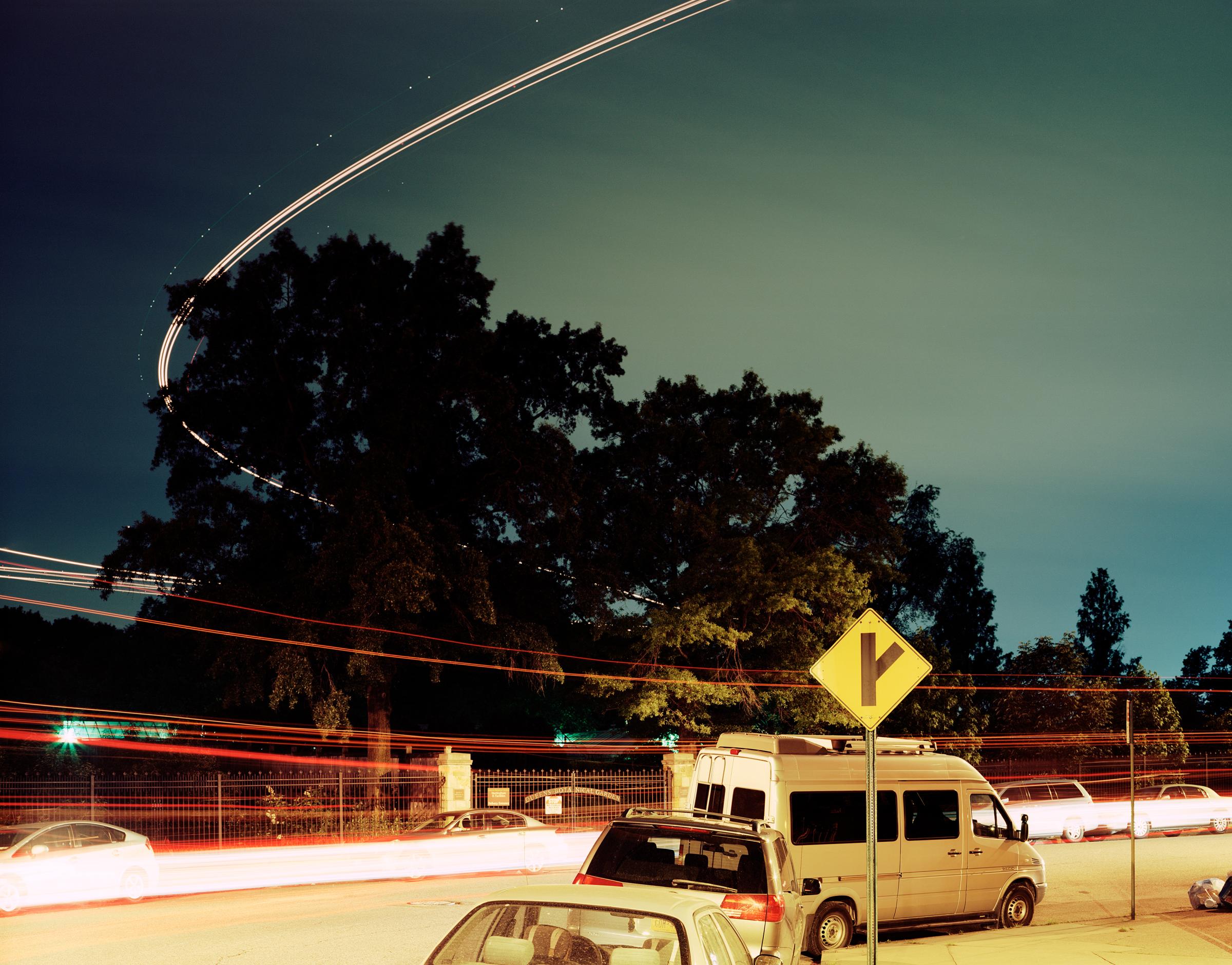Instead of insulting your intelligence with “hacks” like “pack light,” or “bring an empty water bottle,” we’ve put together a list of tips and tricks that will help even the most seasoned jetsetter avoid the inevitable hassles of frequent flying.
1. Sign up for TSA PreCheck or Global Entry
Essentially an express lane for the proactive, these programs are pre-approvals from the U.S. Customs and Border Protection that designate you a low-risk traveler. As long as you’re not a convicted criminal, you’re good to go after little more than some light paperwork and a quick in-person interview.
Essentially, TSA PreCheck ($85) makes U.S. domestic travel simpler, allowing you to keep your shoes, belts, etc. on and cut security lines, while Global Entry ($100) makes returning from an international trip easier, eradicating paperwork and lengthy processing lines.
2. Book two one-way flights
Sometimes flying two different airlines and booking two one-way tickets is cheaper than booking a round-trip, plus it may get you better arrival and departure times as you mix and match flights. Some flight-booking sites, such as Kayak, already do this for you, but you should do your homework and check the airline websites yourself for even better deals.
3. Book non-U.S. airlines if possible
Foreign carriers have better amenities than U.S. ones, even in economy, where they often provide you with hot towels, pillows and blankets, and even — gasp — full cans of soda.
4. Understand Code Shares
Make sure you know how flight partnerships work before booking a flight on a partner airline for miles. Some partnerships will offer the same mileage; others will give you less. Others again may calculate miles based on the amount of money you paid for the ticket, rather than the distance flown.
5. Get upgrades by booking an economy ticket with a Y or B booking code
Ask and thou shalt receive (when possible). Basically just requesting an upgrade when booking should get your ticket marked with a Y or B booking code, which, according to TravelNerd.com‘s Amy Lee, means the flier is looking for an upgrade. In other words, should there be any open seats in the next class up from what you booked, you should get a complimentary upgrade. This works best if you’re a frequent flier and loyal to the carrier you’re booked on.
6. Pretend you’re somewhere else when booking to score discounted fares
Where a ticket is purchased, called its “point of sale,” can affect its price thanks to something called “regional pricing.” Basically, the price of a ticket will be lower in a country with a lower standard of living or when travel companies are trying to break into a new country, according to travel industry analyst Henry Harteveldt.
Harteveldt says you can find different ticket prices for the same flight on Expedia.com and Expedia.co.jp, the Japanese version, as well as for internal foreign flights on an international carrier’s website by changing your “residence” to the airline’s home country. The only thing to watch out for is that you’ll be seeing prices in local currency, so make sure to do the math and convert them.
7. Clear those cookies
A little thing called “dynamic pricing” means that no, refreshing a window 147,554 times will not make a flight cheaper, but it may actually make the price go up as it changes based on demand. While most people like to get around this by using incognito windows, clearing your search history and cookies is a safer bet.
8. Know that you have a 24-hour window to get a refund
Even nonrefundable flights generally have a 24-hour window during which you can cancel them without having to pay a fee. In other words, pull the trigger and book a flight, then keep tracking it for another day to see if a better rate pops up, in which case cancel and rebook. Or put your airfare on hold on carriers like American Airlines, Southwest, and Virgin America, which all have free 24-hour hold services. United has something called a FareLock starting at $6.99 that lets you wait up to a week before booking, while Options Away ($4 to $45) can hold flights for up to three weeks.
9. Fly on a Boeing 767
If you’re deciding between similar flights and one is on a Boeing 767, take that one, as the aircraft has fewer of the dreaded middle seats than other planes.
If you can’t get on a Boeing 767, check out our comprehensive guide to getting the best seat on every flight. Your best bet is checking seatguru.com, which has up-to-date seating charts for every single flight and gives you the inside scoop on whether a row doesn’t recline, whether a seat is too close to the bathroom, or whether there’s any extra legroom to be had.
10. Download your airline’s app
Most airlines (including Delta and United) have invested some significant cash into developing apps that provide you with real-time updates on gate changes or delays, so you can hit up one of those Xpress Spas without worrying about missing vital information. Even better, the app also allows for paperless boarding at most airports.
11. Keep a go-bag of essential items
Instead of wasting time squeezing your favorite shampoo into TSA-friendly 3.4-ounce bottles, or packing and unpacking the same toiletries over and over again, keep a go-bag of your favorite items at the ready. That way you don’t have to think about what you may need or scramble at the last minute.
Pro tip: Try ordering samples of your favorite products online for free travel-size toiletries.
12. Keep an extra set of cables and chargers ready
Forget racing around your apartment pulling cables out of outlets. Instead, keep a small, zippered, and water-resistant bag of electronics, batteries, and chargers packed, and never think about them again.
PHOTOS: Beautiful Long Exposures of Airplanes at Night











13. Pack a squishy carry-on
Checking a bag is amateur hour, but taking this trick to the next level is using a duffel or some sort of squishy bag as your carry-on. Having a malleable bag that can be smushed into the overhead bin means it is less likely to be taken from you at the gate.
Or, even better, outfit yourself with the right gear, such as this “perfect”-size carry-on, which will fit every airline’s size requirements.
14. Roll clothing up, then use air-compression plastic bags to squeeze air out of them
We have tons of packing tips, but one of the best is to roll rather than fold clothes to maximize space and minimize wrinkling, then use space-compressible plastic bags to push excess air out of the clothes for even more space. If you’re not into the idea of rolling your clothes, packing them in tissue paper or dry-cleaner plastic should also reduce wrinkles.
15. Pack one color scheme, and make sure it’s a dark one
Try to pack clothes that are all in the same color family, preferably dark. This means all of your clothes will match and you don’t need to waste time worrying about putting together outfits. Also, dark colors hide stains.
16. Use shoes for more space
Use your rolled-up socks as shoe trees, preserving your shoe’s shape inside the suitcase while maximizing space by using that inside of your shoes.
17. Pack shoes foot-to-toe at the bottom of your bag
Putting the heaviest items at the bottom, near the wheels of a suitcase, ensures that your bag is balanced. There’s nothing worse than a bag that keeps tipping over as you’re rushing to the gate.
18. See extra cities for free
Why not add a free stopover (any connection that’s more than four hours domestically and 24 hours internationally) to a flight you’ve already paid for? Some airlines — and you’ll have to check first — offer free stopovers, generally in their hub city, meaning you can visit an extra destination or two without purchasing any extra tickets. This is especially great if you do it on a business trip while using a company-paid flight.
19. Volunteer to get bumped off a flight
If your flight is overbooked and you have no pressing plans, volunteer your seat to make some extra money. That said, be smart and negotiate your compensation — it helps to know what you’re entitled to. Ask for cash, or make sure flight vouchers don’t have tons of stipulations and blackout dates that would make them impossible to redeem. Also, make sure that even if you’re the first to volunteer, you’ll get the same amount of money as the last one to, as compensation often increases as the airline gets more desperate for people to give up seats. That said, double-check that you will not be on standby on your next flight or in any position to get stranded where you are (for example, if you’re giving up a seat on the last flight out for the day).
20. Check your credit cards for perks
You might already be entitled to perks without knowing it. From covering your insurance when renting a car to hotel-room upgrades and access to airline lounges, many credit cards you may already have come with special advantages and freebies.
21. Choose the best credit card for travel
Travel perks differ, so you need to figure out what your priorities are, like whether you want to earn more miles or get foreign transaction fees waived. One of the best travel credit cards is the Chase Sapphire Preferred Card, which gives you 2 Ultimate Rewards Points per $1 spent on travel and restaurants, as well as 1 point per $1 spent elsewhere. It also waives those pesky foreign transaction fees, offers a signup bonus of 40,000 points when you spend $4,000 on purchases in the first three months of opening an account, and boasts 20% off travel when you redeem points for airfare, hotels, car rentals, and cruises through Chase Ultimate Rewards. That said, it charges an annual fee of $95.
22. Get into the airport lounge, even if your ticket says economy
Most people don’t know that airport lounges often sell day passes, allowing you to pay to access them. While they are pricey, purchasing them in advance online often gets you steep discounts.
You can also get a Priority Pass ($99 to $399 a year), which gives you access to 700 airport lounges around the world.
Finally, there are lounges that aren’t affiliated with any airlines, and thus also allow you to pay for access.
If you don’t want to pay, however, check your credit card to see whether it gives you lounge access (such as the American Express Platinum, which gets you into Delta and Centurion lounges), or play the long game by being loyal to a specific airline and attaining elite status.
23. Get elite status faster
As a frequent traveler, getting in on a loyalty program is imperative. A trick allowing you to fast-track the process, however, is collecting miles on lesser-known partner airlines that may give you the same elite status for fewer miles flown, such as Aegean Airlines, a Star Alliance Member.
24. Save money staying connected
Both in-flight internet fees and roaming charges are exorbitant. Bypass them by getting a subscription to Boingo, a Wi-Fi hotspot provider that ranges in cost between $4.98 a month for access in the Americas to $59 a month for worldwide coverage.
In line with checking your credit cards for perks, know that if you have an American Express Platinum Card you can get a free Boingo subscription.
25. Minimize jet lag by sleeping right
Jet lag — aka when you cross time zones faster than your body can adjust, thereby mucking up your circadian rhythm — usually takes one day to adapt to per time zone crossed when traveling west and about a day and a half when going east. But you can cut down on this recovery time by loading up on sleep before your trip (the more rested you are the less a lack of sleep will affect you), as well as starting to shift your meals and bedtime closer to those at your destination. This takes some forward planning and resoluteness, but if you can, start going to bed an hour earlier each night and getting up an hour earlier each morning a few days before heading east, and an hour later each night/morning for a few days before heading west.
26. Minimize jet lag by eating right
Yes, experts recommend laying off booze and caffeine, as they dehydrate you and make jet lag worse. In terms of food, eating meals when they would be served at your destination helps adjust your circadian rhythm. What you eat matters too — heavily processed food like that served on planes dehydrates you, so the best thing to do is either skip a meal or two or eat healthy snacks or foods that are high in protein.
27. Get food faster by ordering a special meal
This involves some advanced planning and probably not-so-regrettably forgoing the meal everyone else is getting, but by requesting a special meal (kosher or vegetarian, for example) you will usually get served before everyone else, and can go to sleep sooner, without waiting for the full dinner service. Plus, rumor has it that those special meals are better anyway.
28. Head to the departure zone for a cab sans line
If you see a massive line snaking around arrivals, do a quick 180 and head to the departure zone. People will be getting dropped off by cabs, which you can simply snag without any competition. Of course this depends on how an airport is set up — it might cost more time than you’re saving to take a train to another terminal — but hey, you win some, you lose some.
29. Make free(ish) calls abroad
You can make free calls with Skype or Google Voice using its app or the Hangout app. All you need is some Wi-Fi, so buy a local SIM, or get 120MB for only $30 on ATT, for example.
This article originally appeared on Business Insider.
More from Business Insider:
More Must-Reads from TIME
- Caitlin Clark Is TIME's 2024 Athlete of the Year
- Where Trump 2.0 Will Differ From 1.0
- Is Intermittent Fasting Good or Bad for You?
- The 100 Must-Read Books of 2024
- Column: If Optimism Feels Ridiculous Now, Try Hope
- The Future of Climate Action Is Trade Policy
- FX’s Say Nothing Is the Must-Watch Political Thriller of 2024
- Merle Bombardieri Is Helping People Make the Baby Decision
Contact us at letters@time.com